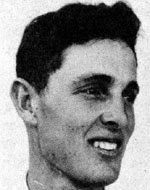Rivlin, Nimrod
Son of-Ami and Hannah. Was born on March 27, 1944. At Kibbutz Gesher, the kibbutz was situated in a temporary place near the Jordan, in buildings that were Crusader and Arab, with a special atmosphere of curiosity and a desire to study the past. And the meeting of the mountains of Gilead and the Golan on the horizon developed the curiosity of the little boy to recognize landscapes, to tour and see the mountains beyond, which left his mark on the entire life of Nimrod in the future. To Nimrod for three and a half years, his parents traveled on a mission to the Holocaust survivors in Hungary – and to rebel with them – the concepts of duty, mission and the other In the War of Independence there was a bridge in the struggle and the children were evacuated from the farm, but at the end of the war the farm moved on to build its new and permanent home in the area.The new space, the momentum of the building And the development, the beginning from the beginning, was a challenge for the six-year-old who had begun his studies at the school, and two years later Nimrod joined his friends in the agriculture. The age of the youth movement, the trips and the camps came. Nimrod guided young children, worked with the knowledge of the country and developed his great fondness for archeology, having discovered in his own hands a bridge of caves and tombs filled with pottery vessels and seal prints. It was more than affectionate; “To expose the remains of ancestral culture – like the design of a new generation and youth,” wrote Nimrod once. Prior to joining the army, Nimrod volunteered for a training year in the Hanoar Haoved movement. Then his characteristic characteristics crystallized: peace, a thorough examination of things. He was not in a hurry to judge before he thought and deepened. As a guide he would never give orders or put himself in the middle. He always strived to develop the initiative of his students. As a result, he received all respect and appreciation from them. In August 1962, he was drafted into the IDF’s reconnaissance unit and was found to be in a commando unit, and he found a combination of fulfilling the role and exhaustion of great love for the landscape and the tours. And was integrated into the fish farming industry until the call to the flag was received in May 1967. It was the last day of the Six-Day War that Nimrod dealt with the cleansing of the Syrian withdrawal route in the south of Ramat – the Golan, and there, in the late afternoon, facing the Sea of Galilee and its valley, the jeep climbed on a mine and Nimrod found his death on the black basalt stones. He put down a wife. He was buried in the military cemetery in Nahariya and was later transferred to the eternal cemetery in his kibbutz. A memorial monument was erected and a forest was planted in his memory and his friend was remembered by his comrades in the Sayeret and the kibbutz. In the two-month “Kineret” of the Emek Hayarden Regional Council, his name was commemorated. The book “Ada Rama” (including his letters and the writings of his relatives) was published by HaKibbutz Hameuchad in 1968. A portion of his estate was published in Yalkut, the literary and artistic estate of those who fell in Israel’s wars – “Volume IV.
